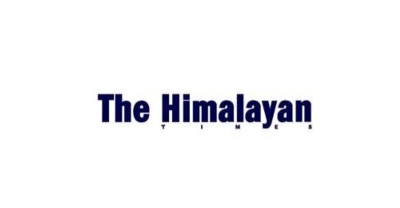TOPICS : Tourism on the rise: Thanks to media
Kalyan Bhandari
Tourism is slowly limping back to normalcy. The glory of tourism business is reviving through increased tourist arrivals. For the consecutive six months the arrival has positively grown with more than 40 per cent over the same period last year - increasing at an average of 49 per cent in the initial three month of the year 2004. And the sign of revival, this time, doesn’t come against the backdrop of ceasefire. This means, tourism is now least responding to the ongoing conflict. The positive trend of tourism in the recent months has come as a surprise to those entrepreneurs who have been ardent critique of Nepal’s response to conflict and had a conviction that tourism cannot thrive under the backdrop of conflict.
Surprisingly, continuous growth of tourism despite the disturbing activities of violence in some part of the country has made everybody rethink about the relation of tourism to that of conflict. What has made the tourism coexist with the conflict? Clearly, the revival of tourism in the pretext of conflict can mostly be attributed to the role of media. The act of media that has intensified the conflict to disproportionate extent has started to gain result, but positively. The short-term negative effect of disproportional media coverage of the conflict is slowly metamorphosing into a tourist confidence in Nepal as a destination.
Continuous coverage over the years helped in delimiting the conflict to a mere safety and security concern. The media, in this way, not only broadened the nature of conflict but also facilitated the tourists, with all the pre-information, in estimating the extent of risk involved with while travelling to Nepal. This has brought about a major shift in tourists perception of Nepal’s conflict and helped in attaining the destination confidence.
The media in the due course of its reporting answered many doubts about the nature, scope and fatality of the conflict clearing most of the doubts created during the initial years of conflict reporting. This has helped tourists in exonerating any fears that the ongoing conflict has anything to concern the international travellers. Interestingly, the special mention of tourism made during the period of bandhs and strikes helped tourism attain the focus in every public debate in such occasions. Various national and international campaigns aimed at mitigating the impact of conflict is of course noteworthy. Very positively country’s response to tourism crisis through the introduction of various policy measures has helped in sending positive feelers to the international community.
Another important activity that has kept our tourism survived is the organisation of events and festivals. Many local festivals and events has helped in keeping the wheel of tourism moving. The event and festival was an effective means in disseminating Nepal’s readiness to tourism and provide the message that Nepal, even under conflict, is no less a “happening” place for the tourists. Finally, the initial confusion and fear of conflict has vanished. But what
needed now is not only positive message but also proactive activities. Media still remains inexorably linked to tourism promotion.





